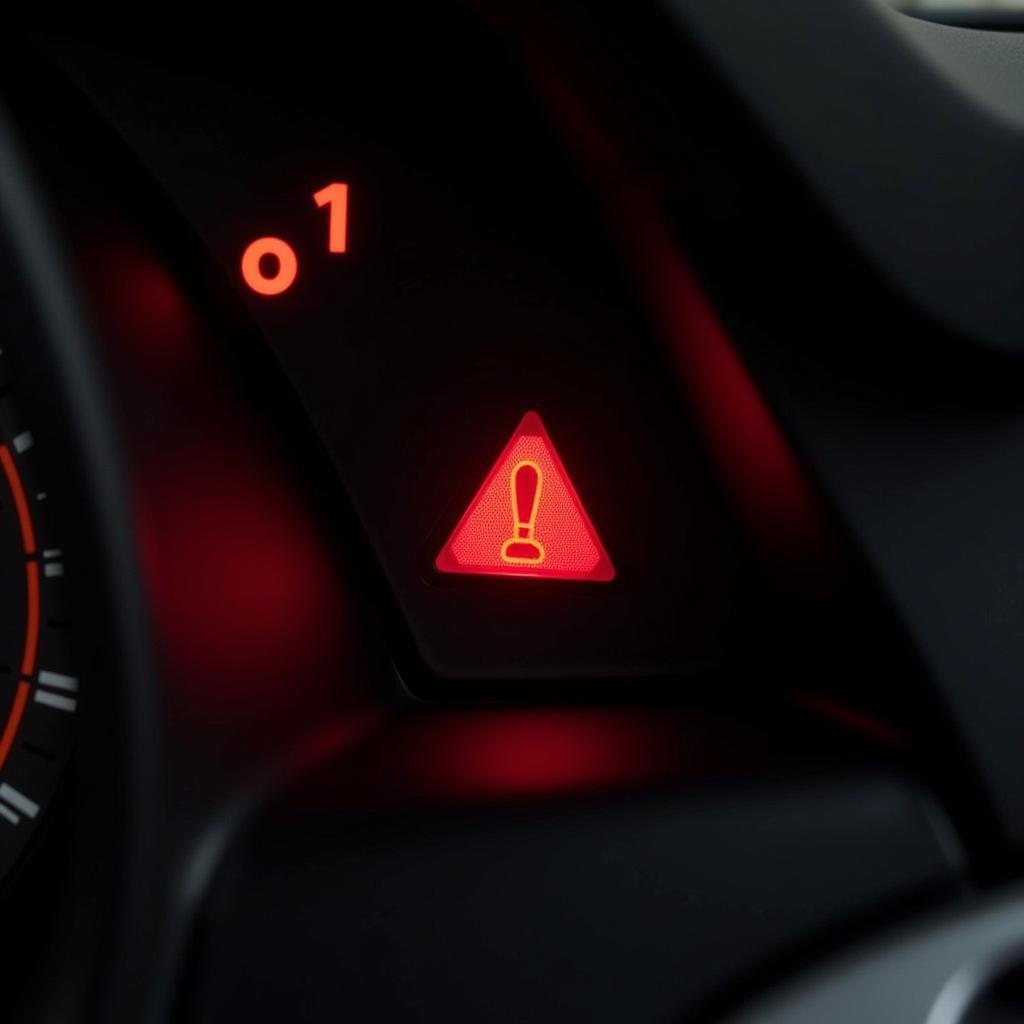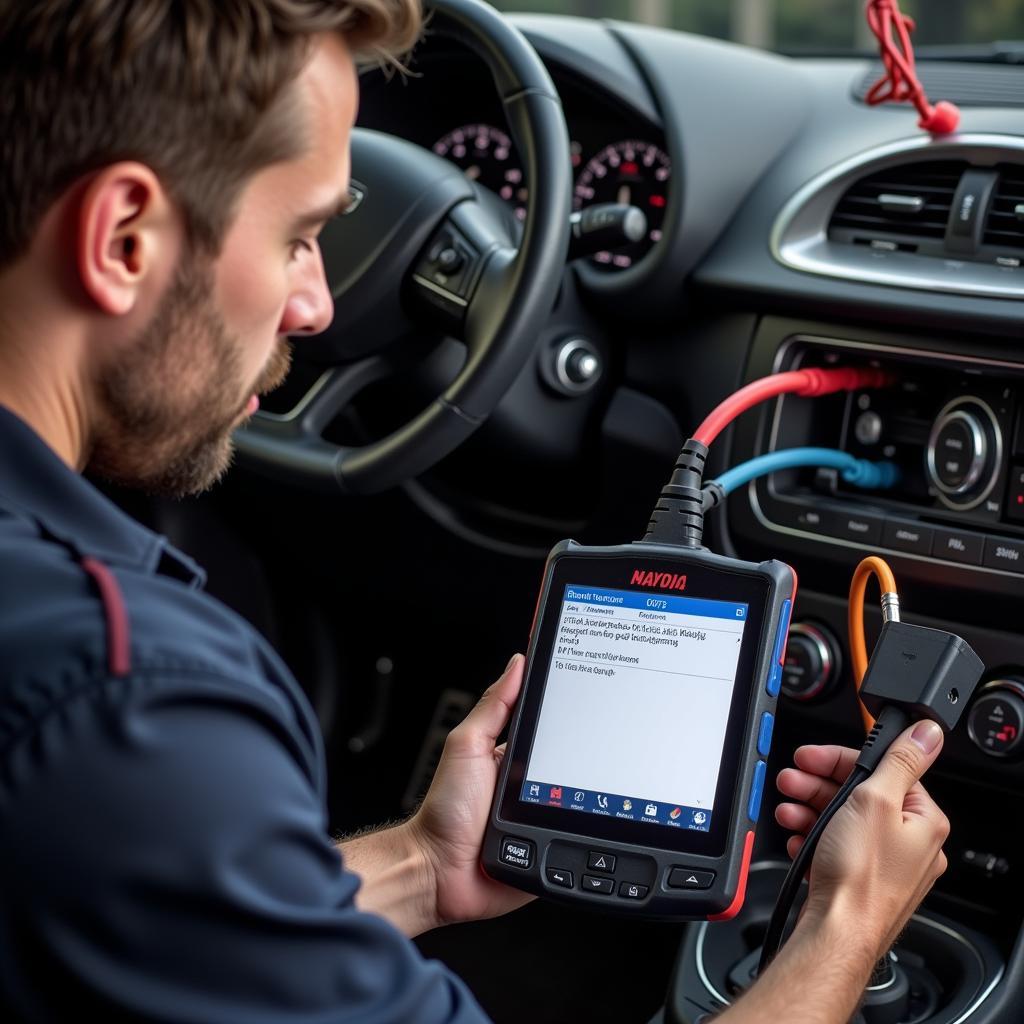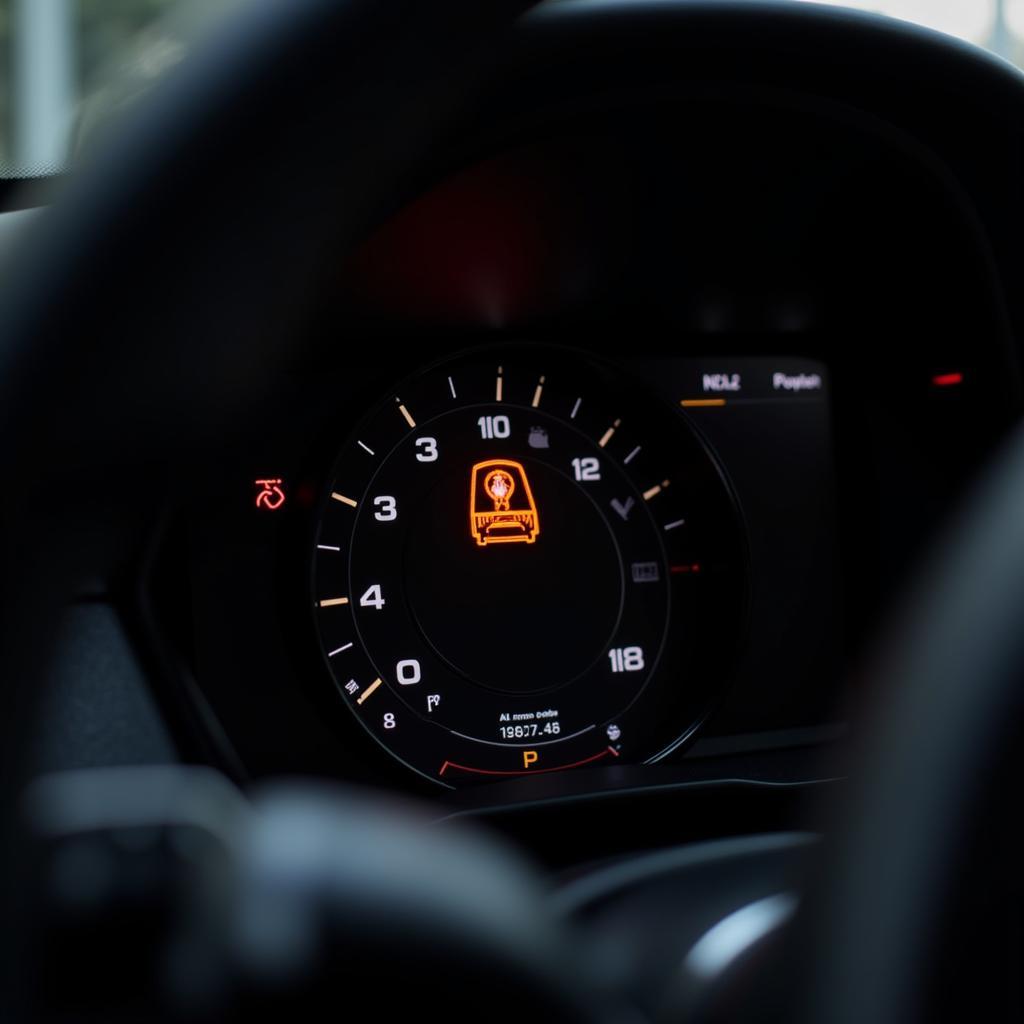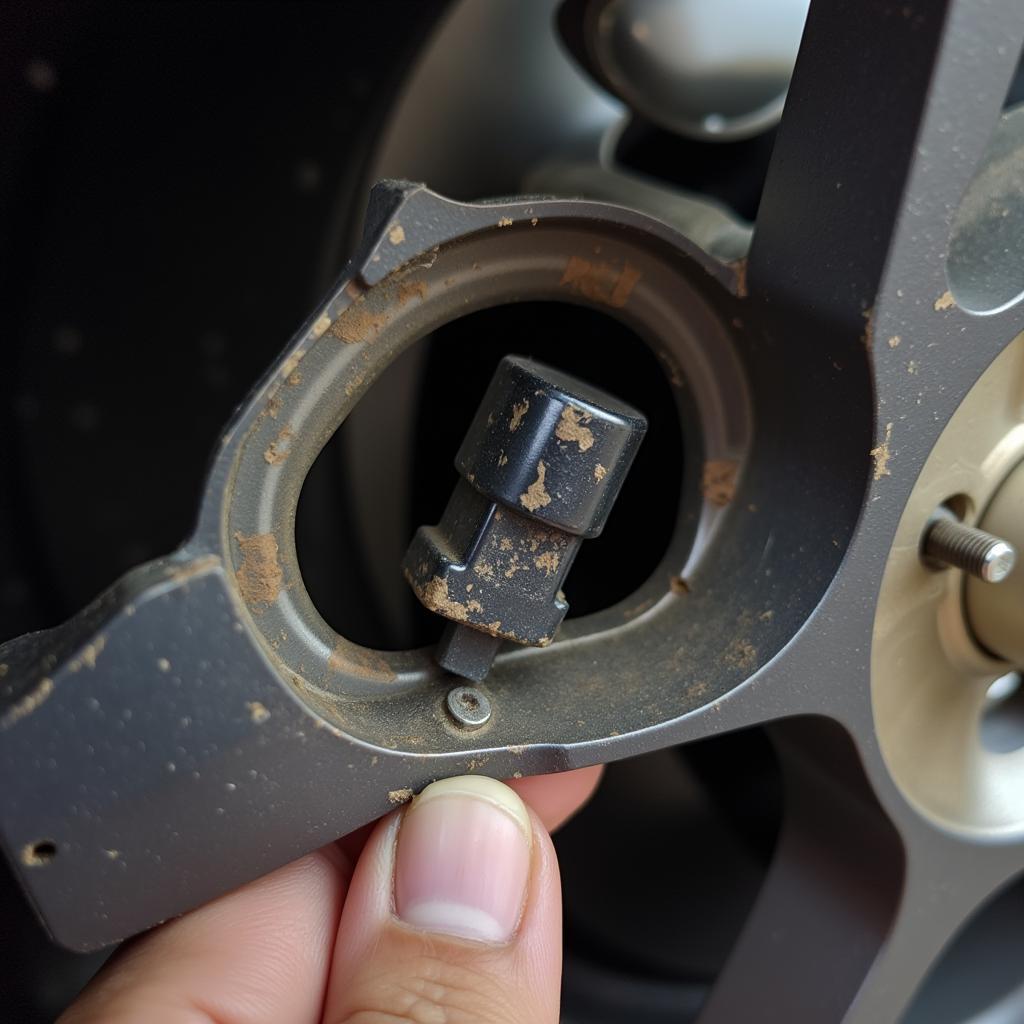The ejection seat warning triangle, a critical safety indicator in certain vehicles, can sometimes illuminate erroneously, causing concern. This article explores the ejection seat warning triangle, its function, common causes of malfunction, and troubleshooting steps. We’ll delve into diagnostic techniques, software solutions, and remote programming options for rectifying this issue.
What is the Ejection Seat Warning Triangle?
The ejection seat warning triangle is a visual warning signal, typically a red triangle, indicating a potential problem with the vehicle’s ejection seat system. While ejection seats are primarily associated with aircraft, some specialized vehicles, including certain military and high-performance models, may be equipped with them. This warning light serves as a crucial safety alert, prompting the driver to investigate and address the underlying issue.
Common Causes of an Illuminated Ejection Seat Warning Triangle
Several factors can trigger the ejection seat warning triangle. These range from simple sensor malfunctions to more complex wiring issues. Here’s a breakdown of the common culprits:
- Faulty Sensors: Sensors play a vital role in monitoring the ejection seat system. A malfunctioning sensor can send erroneous signals, illuminating the warning triangle.
- Wiring Problems: Damaged or corroded wiring within the ejection seat system can disrupt communication and trigger the warning light.
- Software Glitches: Software controlling the ejection seat system can occasionally experience glitches, leading to false alarms.
- Low Battery Voltage: In some cases, a low battery voltage can interfere with the proper functioning of the ejection seat system, causing the warning light to illuminate.
- Mechanical Issues: Physical problems with the ejection seat mechanism itself, such as a jammed component, can activate the warning system.
 Ejection Seat Warning Light on Car Dashboard
Ejection Seat Warning Light on Car Dashboard
Troubleshooting the Ejection Seat Warning Triangle
If you encounter an illuminated ejection seat warning triangle, it’s essential to address the issue promptly. Here’s a step-by-step guide to help you troubleshoot the problem:
- Check the Owner’s Manual: Consult your vehicle’s owner’s manual for specific information regarding the ejection seat system and its warning lights.
- Visual Inspection: Carefully examine the ejection seat area for any visible signs of damage, loose connections, or foreign objects.
- Battery Check: Ensure your vehicle’s battery is adequately charged. A low battery voltage can cause various electrical malfunctions, including triggering the ejection seat warning light.
- Diagnostic Scan: Utilize a professional-grade diagnostic scanner to retrieve any stored fault codes related to the ejection seat system. These codes can provide valuable insights into the underlying issue.
 Mechanic Using Diagnostic Scanner on Ejection Seat System
Mechanic Using Diagnostic Scanner on Ejection Seat System
Remote Diagnostics, Programming, and Software Solutions
Modern automotive technology allows for remote diagnostics, programming, and software updates to address various vehicle issues, including ejection seat warning triangle problems. Remote diagnostics can pinpoint the root cause of the problem without physical access to the vehicle. Specialized software can be remotely installed or updated to rectify software glitches within the ejection seat system.
“Remote diagnostics and programming are game-changers in the automotive industry,” says John Smith, Senior Automotive Electrical Engineer at Advanced Auto Solutions. “They allow us to efficiently diagnose and resolve issues remotely, saving time and resources for both the technician and the customer.”
- Seek Professional Assistance: If the troubleshooting steps above don’t resolve the issue, it’s crucial to seek professional assistance. A qualified automotive technician specializing in ejection seat systems can perform a thorough diagnosis and implement the necessary repairs or software updates.
Conclusion
The ejection seat warning triangle is a critical safety indicator that shouldn’t be ignored. By understanding its function, potential causes, and troubleshooting steps, you can address this issue effectively and ensure the proper operation of your vehicle’s ejection seat system. If the problem persists, consult a qualified automotive technician for professional assistance. Don’t delay in addressing the ejection seat warning triangle, as it could indicate a serious safety concern.
“Addressing the ejection seat warning triangle promptly is crucial for ensuring safety,” emphasizes Dr. Emily Davis, Automotive Safety Expert at the National Vehicle Safety Institute. “Don’t underestimate the importance of this warning signal.”
FAQ
- What should I do if my ejection seat warning triangle illuminates while driving? Safely pull over, consult your owner’s manual, and perform a visual inspection. If the issue persists, contact a qualified technician.
- Can I drive with an illuminated ejection seat warning triangle? While it might be possible, it’s not recommended. The warning light indicates a potential safety concern that should be addressed promptly.
- How much does it typically cost to repair an ejection seat system issue? The cost varies depending on the specific problem, vehicle model, and labor rates. Consult a qualified technician for an accurate estimate.
- Are ejection seats common in regular cars? No, ejection seats are primarily found in specialized vehicles, such as certain military and high-performance models.
- Can I reset the ejection seat warning triangle myself? Attempting to reset the warning light without addressing the underlying issue is not recommended. It’s best to diagnose and resolve the problem first.
- What is the role of software in modern ejection seat systems? Software plays a vital role in controlling and monitoring the ejection seat system, including safety checks and diagnostics.
- Where can I find a qualified technician specializing in ejection seat systems? Contact your vehicle manufacturer or search online for specialized automotive repair shops in your area.


